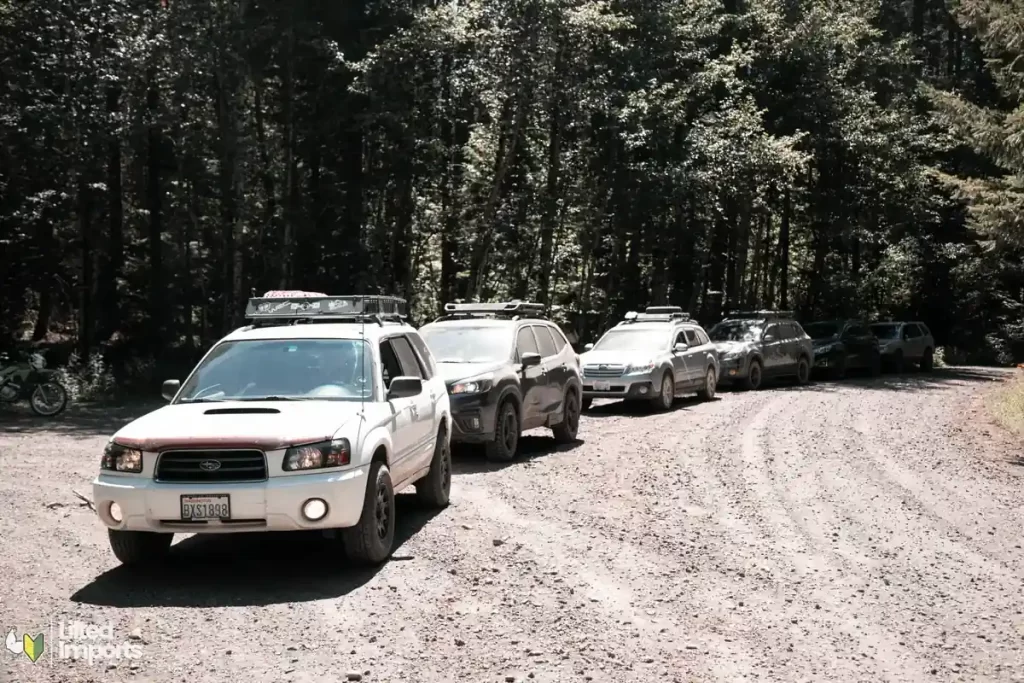
What are the offroad limits of Subarus? 2 major problems I've encountered
By Ben Boxer
Last updated on February 9th, 2024
After a decade of driving lifted Subarus, I’ve been repeatedly surprised by these little awd cars. Subarus have taken me to places that I never expected and kept up with 4×4’s when I thought I’d get left behind. Subarus can absolutely be taken offroad even in stock form.
The recent release of the various Wilderness Edition models gives owners even more capable options right from the factory. But the truth is, there are limits to what a Subaru can do and how far it can be modified.
Subarus will never be as rugged as a true 4×4, and without essentially rebuilding the car from the ground up, a Subaru simply cannot be turned into a rock crawler for two very important reasons:
- No reduction gear
- Smaller drivetrain and suspension components
However, many Subaru models including the Forester, Crosstrek, Outback, and even Ascent can certainly be used for off-pavement driving without modification.
Let’s jump in and discover whether or not a Subaru is the right choice for your offroad driving.
Subaru Offroad Capability
Taking Stock Subarus Offroad
The current Subaru lineup is comprised of multiple vehicles that can easily be taken off the pavement without any modification. These are the most capable models currently available from Subaru:
- Outback
- Forester
- Crosstrek
- Ascent
The Outback, Forester, Crosstrek and Ascent are very capable choices for mild offroad driving with 8.7 inches of ground clearance – while the Impreza, Legacy and WRX models are popular for spirited driving on gravel and dirt roads. But the offroad capability doesn’t stop there. The Wilderness Edition Forester and Outback have 9.2 and 9.5 inches of ground clearance respectively from the factory and the Crosstrek W.E. has a modest 9.3 inches of ground clearance. Every Wilderness Edition also comes from the dealership outfitted with all-terrain tires that are ready to take on dirt, gravel, and mud with no problem.
The Wilderness Edition models also have improved gearing that allows them to be more effective in offroad situations at lower speeds. For example, the Wilderness Edition Forester has a 4.11 final drive ratio instead of the standard 3.70 final drive. Higher gearing allows the Subaru to climb steeper grades more effectively and take on technical obstacles at lower speeds.
According to Subaru US Media Center, another highlight is the Wilderness-exclusive Dual-mode, Dual-function X-MODE. This provides multiple modes tailored for specific offroad scenarios, including Snow/Dirt mode and Deep Snow/Mud mode with the latter being operational at speeds both under and over 25 mph. In non-Wilderness Edition Subarus X-MODE is always automatically deactivated at 18mph.
I think the Low Speed/Low Ratio Gradient Control that enhances the Wilderness Edition models capability on steep gradients is also a really cool feature. It can automatically detect vehicle travel on aggressive slopes and seamlessly shift to a “CVT low ratio,” comprised of a lower transfer gear ratio and lower first ratio. The result is optimized trail performance and control which is perfect for offroad usage.
The Wilderness Edition Subarus also have redesigned front and rear bumper fascia that allow for better approach and departure angles. This means drivers can “approach” steeper obstacles without damaging their bumpers.
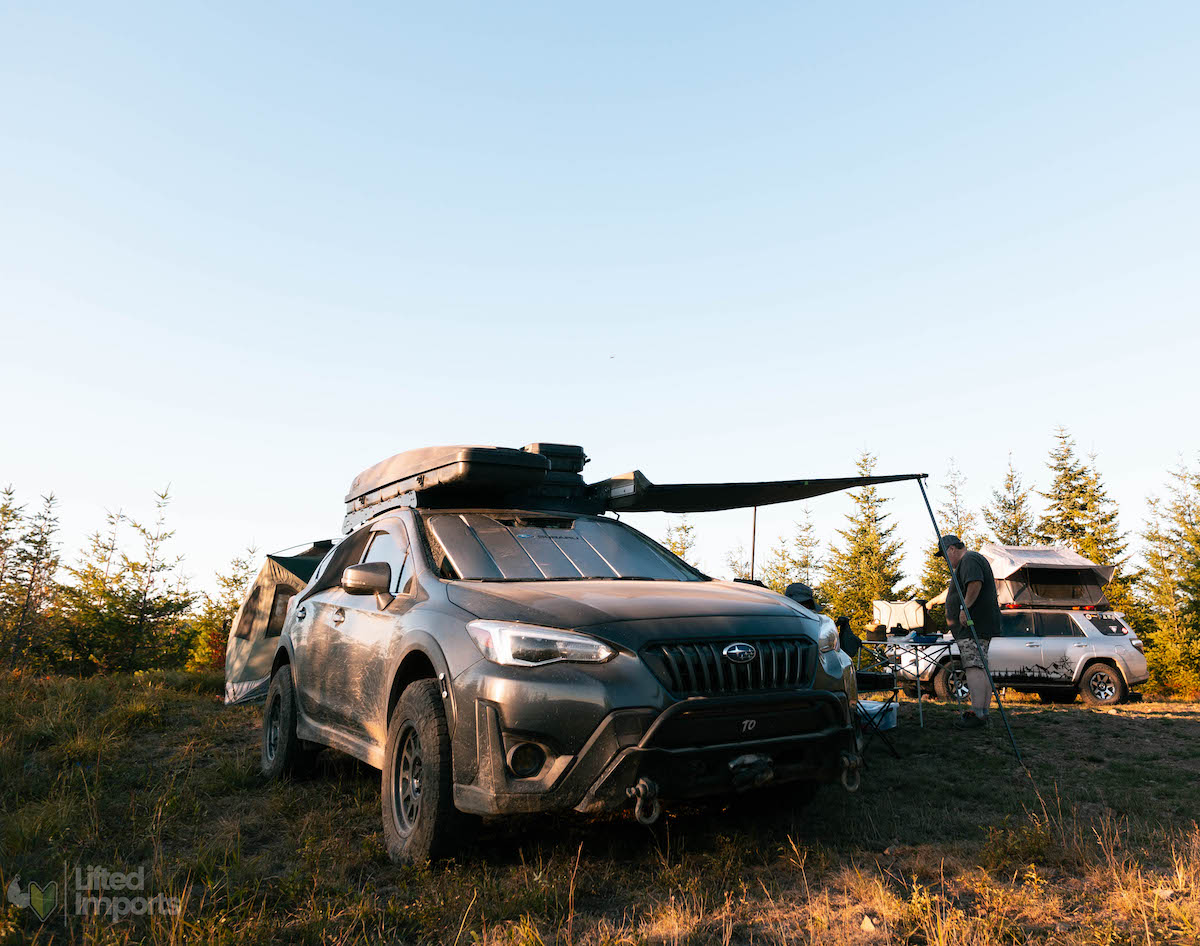
Even More Capability With Basic Modification
If over 9 inches of ground clearance isn’t enough, a 1.5 inch economy lift kit from Anderson Design can be installed for under $300. This lift kit will also allow for a 245/65R17 tire which provides an additional half inch of ground clearance.
While the installing larger, more aggressive tires adds additional ground clearance, it also creates extra grip and capability. When driving offroad trails, bigger tires are almost always the best option for tackling obstacles.
I’ve driven some pretty aggressive trails with other modified Subarus and have been impressed by the appearance and capability of the newer Subaru models. I had previously been resistant to the updates that Subaru had been making, but I’ve been extremely proud to see what they’re doing in the offroad sector. Check out this fully lifted Outback Wilderness that I had the pleasure of doing section 2 of the WABDR with. It had no problem climbing all the obstacles and navigating every portion of the trail with ease:
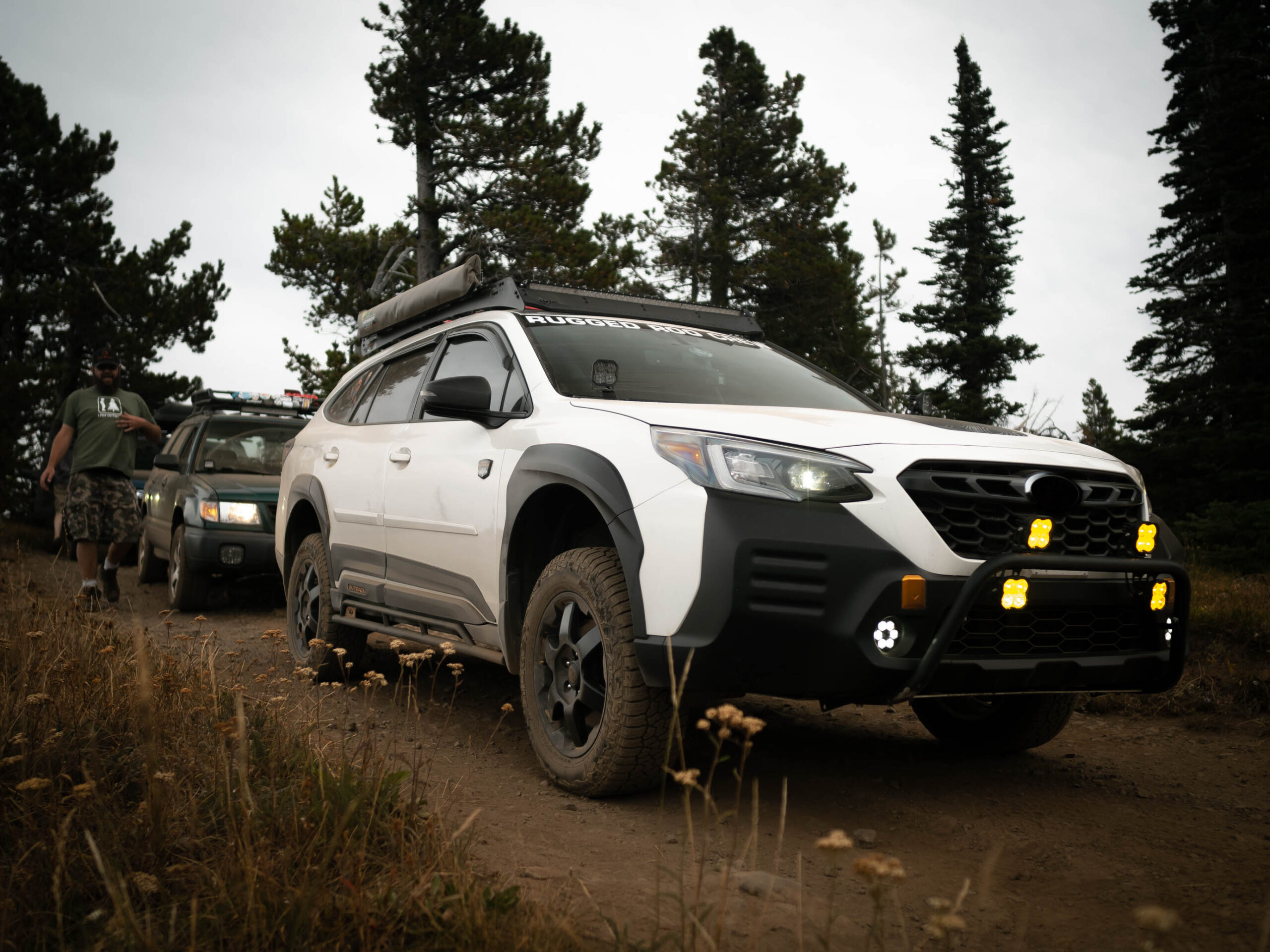
What Can A Subaru Do Offroad?
As mentioned previously, even stock Subarus can take on mild offroad trails. I personally use the onX Offroad trail rating system to gauge trail difficulty. It ranges from 1-10 and most stock Subarus can take on a Level 1 trails without an issue. Confident drivers may even be willing to try Level 2 trails in their stock Subaru but may sustain minor damage.
I have seen lifted Subarus and Wilderness Edition Subarus take on Level 2 & 3 trails without issue. Having aggressive tires and extra ground clearance allows drivers to navigate offroad obstacles successfully. Ambitious drivers with offroad expertise may even want to push their Subarus on Level 4 trails which can include 18″ obstacles and water crossings up to a foot deep.
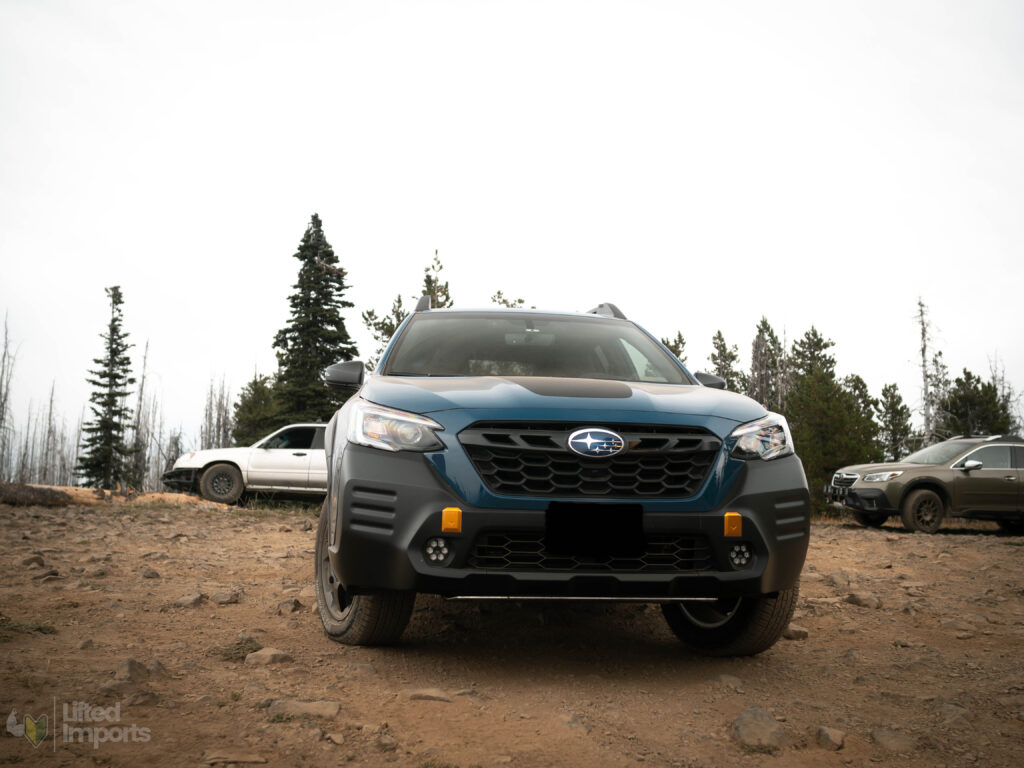
If you’re curious about how the onX Offroad trail ratings work, here’s a breakdown of them:
Trail Technical Rating: 1
Difficulty Level: Easy (Stock Subarus should have no issues if equipped with all-terrain tires)
Expected Terrain: Dirt or rocky road with gentle grades. Roads are typically two vehicles wide.
Trail Technical Rating: 2
Difficulty Level: Easy (Experienced drivers should be fine using stock height Subarus here with caution)
Expected Terrain: Dirt or rocky road, typically not maintained after rain or snow. May encounter shallow water crossings and obstacles under 12”, including small ledges.
Trail Technical Rating: 3
Difficulty Level: Easy (Lifted Subarus and Wilderness Edition Subarus will do fine on these trails)
Expected Terrain: Uneven, rutted dirt trail with potential for loose rocks, sandy washes, and water crossings less than a foot deep. Potential for mud holes and trail obstacles up to 12”, including ledges and short, steep grades. Roads are typically one vehicle wide with places to pass.
Trail Technical Rating: 4
Difficulty Level: Moderate (Lifted and Wilderness Edition Subarus should be fine when approached with caution and experience using various recovery techniques.)
Expected Terrain: Uneven, rutted dirt trail with loose rocks, sand, erosion, and washes. Potential water crossings up to a foot deep, mud holes, and obstacles up to 18”, including ledges and short, steep grades. Roads are typically one vehicle wide with places to pass.
Trail Technical Rating: 5
Difficulty Level: Moderate (Should not be attempted by Subaru owners)
Expected Terrain: Uneven, rutted dirt trail with loose rocks, sand, erosion, and washes. Potential water crossings up to 18” deep, mud holes, and obstacles up to 2 feet, including ledges and short, steep grades.
Trail Technical Rating: 6
Difficulty Level: Moderate (Should not be attempted by Subaru owners)
Expected Terrain: Very rocky, rutted, and off-camber trail with erosion, loose rocks, sand, washes, and obstacles up to 3 feet tall, including ledges and short, steep grades. Potential for deep water crossings with strong currents depending upon the time of year.
Trail Technical Rating: 7
Difficulty Level: Difficult (Should not be attempted by Subaru owners)
Expected Terrain: Off-camber trail with deep holes and large rocks that may exceed axle height. Expect erosion, loose rocks, tree roots, sand, washes, shelves, and deep mud holes. Obstacles and ledges up to 5 feet. Near-vertical grades 8-10 feet tall. Potential for water crossings with strong currents. Exercise caution: vehicle damages are possible.
Trail Technical Rating: 8
Difficulty Level: Difficult (Should not be attempted by Subaru owners)
Expected Terrain: Off-camber trail with deep holes and large rocks that may exceed axle height. Expect erosion, loose rocks, sand, washes, shelves, and deep mud holes. Obstacles and ledges up to 6 feet, and near-vertical grades 12-14 feet tall. Potential for deep water crossings with strong currents. Exercise caution: vehicle damages are possible.
Trail Technical Rating: 9
Difficulty Level: Extreme (Should not be attempted by Subaru owners)
Expected Terrain: Trails for the most advanced off-road riders only. Off-camber trail with deep holes and large rocks that may exceed axle height. Expect erosion, rain ruts, loose rocks, sand, washes, shelves, and deep mud holes. Obstacles and ledges up to 8 feet and near-vertical grades 15-18 feet tall. Potential for deep water crossings with strong currents. Exercise extreme caution: vehicle damages are likely.
Trail Technical Rating: 10
Difficulty Level: Extreme (Should not be attempted by Subaru owners)
Expected Terrain: Extreme caution! Recommended only for very experienced off-road dirt bike riders with a terrain-ready motorcycle. Severe grades and off-camber terrain. Expect obstacles exceeding 10 feet and near-vertical grades over 18 feet. Exercise extreme caution: vehicle damages are likely.
Why I Prefer My Lifted Subaru For Offroad Trips
Unless I’m going to be wheeling on trails above a Level 4, I enjoy my Subaru Forester more than my 4×4. If there won’t be any hardcore obstacles to overcome, the overall driving experience is much better.
I prefer to use my Subaru for up to level 2 trails. If there are obstacles larger than 12 inches or water deeper than about a foot, I like to take the Jeep instead.
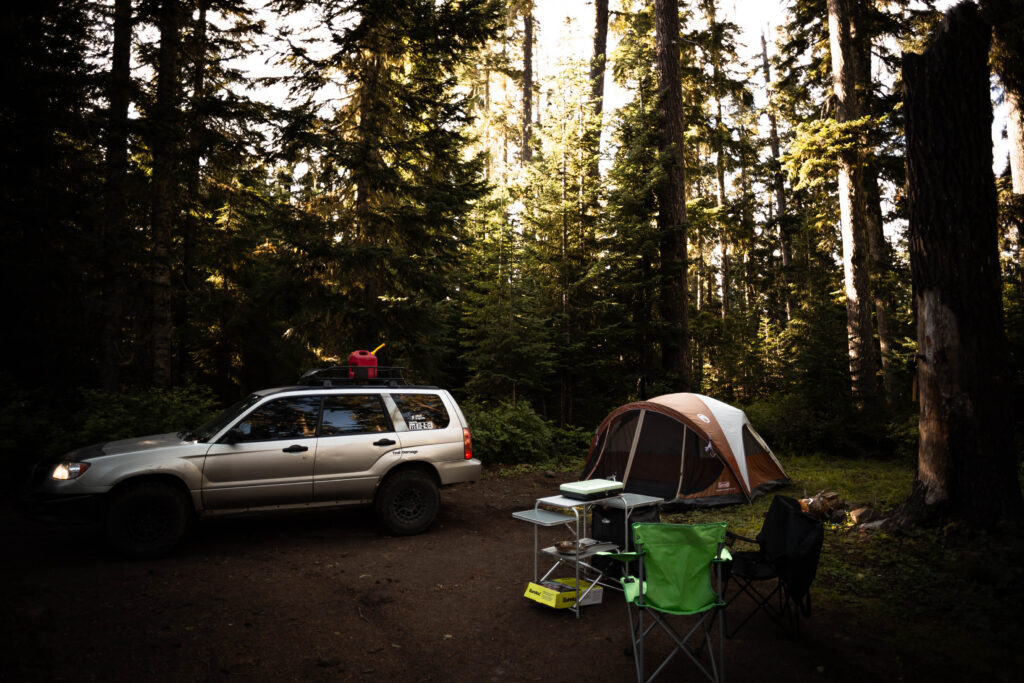
Subarus are better for mild offroading for the following reasons:
- Better fuel economy
- Less bumpy ride on mild trails
- More nimble on narrow trails
- Less likely to have mechanical problems
- Substantially more comfortable experience all around
Where Subarus Fall Short On The Trails
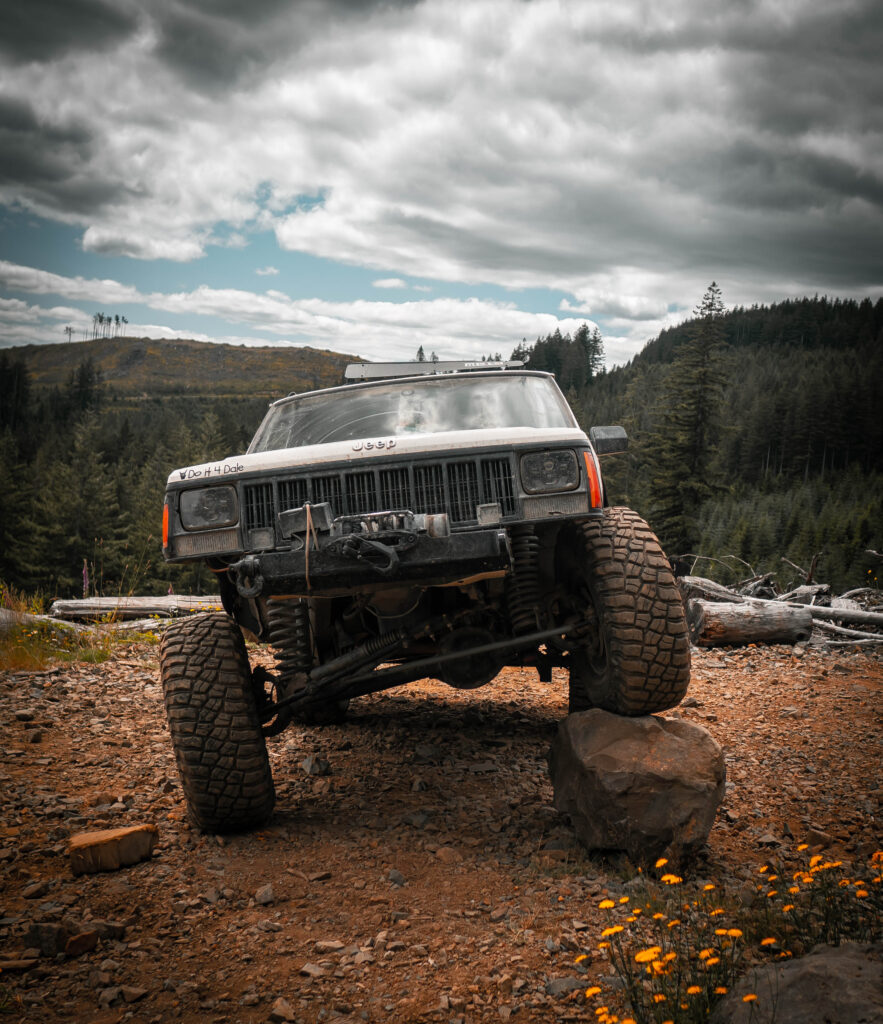
While I really enjoy running my Subaru down forest roads to get to a hike or a camping spot, there are certainly limitations to even a modified Forester on mud tires. When it comes to steep obstacles, snow deeper than a foot, or large rocks, the Subaru simply can’t keep up without substantial damage.
No Reduction Gear
In my opinion, the biggest shortcoming of Subarus for offroading is their lack of a “4lo” option or a transfer case in the traditional sense. Most of you likely know how a transfer case works, but I’ll lay out the basics for those that may be newer to 4×4’s:
Low range mode in a transfer case is designed to provide additional torque at lower speeds, particularly in off-road situations where more power is needed to overcome obstacles or challenging terrain. Here’s a detailed explanation of how the low range mode works:
- Gear Reduction: When the transfer case is shifted into low range mode, it engages a set of gears with a lower gear ratio than the standard (high range) mode. This gear reduction results in slower output shaft speed but significantly increased torque.
- Increased Torque: Torque is the rotational force applied to the wheels. With the lower gear ratio, the transfer case multiplies the torque coming from the engine. This is crucial for crawling over rocks, navigating steep inclines, or tackling other off-road obstacles where additional power is required.
- Enhanced Traction: The lower speed and increased torque in low range mode provide better control and traction in challenging off-road conditions. This is especially useful in situations where a vehicle needs to navigate through mud, sand, or steep uphill or downhill terrains.
- Precision Control: The slower speed in low range allows for more precise control of the vehicle. This is beneficial when maneuvering through tight spots or when a gradual and controlled approach is required, such as when descending a steep hill.
- Off-Road Maneuverability: Low range mode is particularly valuable in off-road driving scenarios, such as rock crawling or traversing rough trails. The increased torque and controlled speed help the vehicle maintain traction and stability, reducing the likelihood of wheel slippage.
- Driver Engagement: The driver typically manually selects low range mode using a lever, button, or dial inside the vehicle. This gives the driver the flexibility to engage low range when needed and revert to high range for normal driving conditions.
In summary, the low range mode in a transfer case provides a gearing option that prioritizes torque over speed. This is crucial for off-road driving, where lower speed torque is needed. It allows for utilizing power and torque without wheel spin or overly stressing the engine/transmission.
From personal experience, I have found that I can easily climb hills and obstacles that are twice as steep in my 4×4 when compared to my Subaru. The Subaru struggles to climb advanced sections of the trail and I have to use momentum vs torque.
These are some of the most notable issues with not having a reduction gear or “4lo” in a Subaru:
- Inability to climb steep hills
- Speed has to be prioritized which increases the likelihood of damaging the vehicle
- Wheel spin while tackling offroad obstacles can cause tire punctures and CV axle damage
Smaller Drivetrain And Suspension Components:
All things aside, Subarus simply aren’t designed to be modified to the level of becoming a “rock crawler.” With fully independent suspension, small differentials, small axles, and less robust transmissions than most 4×4’s, there is a limit to how hard they can be driven on trails. From a technical standpoint, Subarus were designed more to be a safe commuter car with the ability to maintain traction in the rain, snow, dirt, and gravel.
Another thing to consider is the fact that Subarus weren’t designed with the possibility of easy gear modification. The front differential is encased INSIDE Subaru transmissions. A technician can easily remove the ring and pinion from a 4×4 with very little effort as they are housed outside of the transmission in very accessible areas. If you wanted to change your Subaru’s gear ratio, the manual or automatic transmission would need to be fully removed from the car and then split in half. And without a 4lo option, this won’t do much for offroadability even if you found someone willing to do the work.
The ring gear on Subarus is around 6-6.5 inches in diameter which makes it far too small for hardcore offroading. On even the more average sized 4×4 differentials, the ring gears are 8 inches minimum. For example, the Dana 44 found in many Jeep Wranglers has an 8.5 inch ring gear in the smallest models. This means that the teeth on the ring and pinion can handle bigger tires and more aggressive throttle without chipping or experiencing catastrophic failure.
Even small things like steering modification are another reason that true 4×4’s are more suited for offroad mods. A heavy duty steering system can be installed on most Jeeps in an afternoon and costs maybe $600 total. With Subarus, we’re very limited to what we can do with the steering rack that came on our car. The inner and outer tie rods can only handle so much before they need replacing.
The Verdict: Are Subarus Any Good For Offroading?
Despite not being a full blown 4×4, I have had more fun in my lifted Subarus than in any other car. They are the perfect car for being able to drive long distances comfortably and then jump into the dirt or mud with no worries. They can handle mild modification that increases their factory capability.
With a mild lift kit and a good set of all-terrain tires, the Subaru platform is one of the best adventure cars. But if hardcore trails and rock crawling are of interest to you, it may be time to grab a Jeep or Toyota!

Good info that fits us perfectly!
We recently went to a 235x60x17 AT tire and will be picking up our now 2″ suspension lifted 2019 Forester tomorrow.
We are explorers rather than hard core off roaders but get into situations where a little more clearance would be comforting.
Thanks,
Ted & Myrtie
Glad to hear!! Would love to see photos of your Forester:D I think you picked the right car for what you’re doing. Subarus do very well for getting around to explore. Obviously they’re not rock crawlers, but they don’t need to be! 🙂